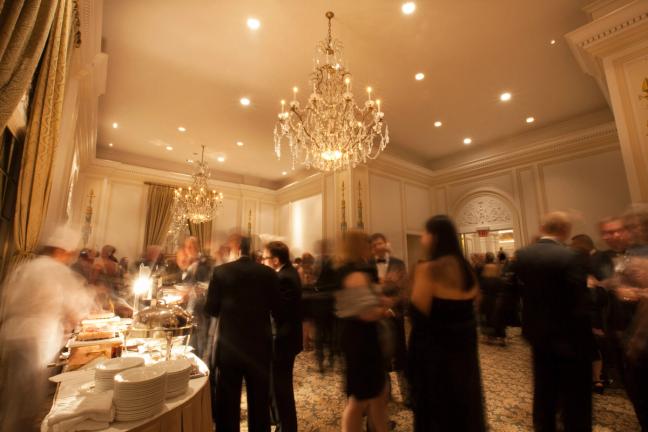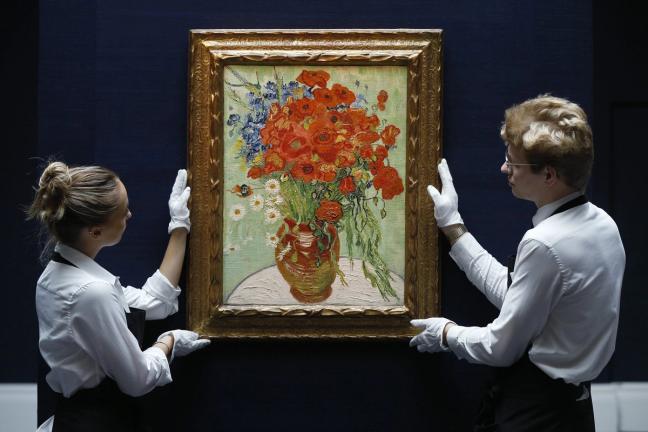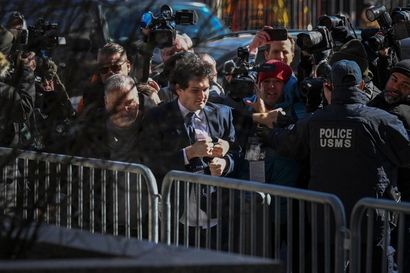How auction houses attract the biggest billionaire buyers
The tactics are bold, brash and often baffling - but this is how the houses hook big money buyers
In 2017, Christie’s auction house announced their most expensive lots of the year. Amongst the Da Vincis and Van Goghs were iconic examples Andy Warhol’s Sixty Last Suppers, which sold for an appropriate $60 million, Three Portraits of George Dyer by Francis Bacon, which went for just over $50 million, and a pre-Great War abstract by Fernand Léger, for which the gavel went down for over $70 million.
And, with big money like this flying around, passing hands and helping to build collections the world over, the competition for consignments and buyers’ business alike is understandably fierce. But just how do giant auction houses, such as Sotheby’s, Phillips or, indeed, Christie’s, attract, woo and keep the custom of some of the world’s richest collectors?
Making the connections

Let’s start with the obvious. To build up a bank of contacts and buyers worth their salt, the auction houses must socialise furiously – travelling the globe and flitting from New York to London to Paris to court and curry favour with some of the most prolific collectors active today. An auction specialist employed by one of the big three is expected to meet and learn the preferences of thirty new clients every year – no mean feat.
"These untapped pockets of potential and potential pockets to tap are equally as important as the existing collectors..."
And, of course, then there is the slightly less enviable task of meeting the big money men and women who have seemingly no interest in art – those preoccupied with the stock markets, real estate, or Bitcoin. These untapped pockets of potential and potential pockets to tap are equally as important as the existing collectors, as they offer the opportunity to grow the industry, and introduce new players to an already competitive game.
Playing the numbers

It stands to reason that one of the world’s fastest growing economies would also be the country producing the most new billionaires. China, then, is in the sights of every major auction house, with specialists such as Christie’s contemporary art specialist Xin Li being hired in order to help tap her native country – and the considerable wealth it possesses.
But the tactics go beyond the people in this instance. To the Chinese, numbers hold superstitious qualities just as colours do. And the number 8 is the numerical equivalent of lucky red. So, when Modigliani’s Nu Couche was offered through Christie’s in 2015, the house placed it as Lot 8A, attracted much interest from Asian bidders as a result and, finally, sold it to Liu Yiqian for the princely sum of $170.4 million. Amusingly, the Chinese billionaire paid on his American Express Centurion Card – the largest single purchase ever made on a credit card.
Scratching the backs

Business is often mutually beneficial – beyond the financial facet of the exchanges. Christie’s and Sotheby’s operate with this outlook, and employ tactics that sweeten even the most expensive of deals to attract certain collectors and bidders. One of the most common ways in to the good books of a buyer, reported Kelly Crow of the Wall Street Journal, was by creating better lives for their children.
"It is not unknown for specialists from the auction houses to organise lavish birthday parties for the children of wealthy buyers..."
It is not unknown for specialists from the auction houses to organise lavish birthday parties for the children of wealthy buyers, not only to placate and please their existing customers, but also as a way to connect with the rich parents of other children in attendance. In 2014, one such party was hosted by Sotheby’s – with an aptly art-themed scavenger hunt as the main attraction. And, in 2014, Alex Rotter and Simon Shaw of Sotheby’s admitted to helping get collector’s children into a particular college to score consignments.
Chancing their hands

Of course, much deal-breaking can be attributed to ballsy actions and tactics so left-field that they fall off the pitch altogether. One of these higher-risk players, employed by auction houses, is Loic Gouzer – who has worked at both the major players during his time in the auction world. Today, he is a chairman of post-war and contemporary art at Christie’s, but his earlier years saw some truly audacious escapades to land clients.
He once embarked on a last-minute surfing trip with world-famous collector Adam Lindemann – despite never having touched a board in his life. He came back unscathed, however, and has worked with Lindemann on several occasions since. But, perhaps the best story comes from the surgery of a Manhattan plastic surgeon. Gouzer, who wanted to land a consignment from the doctor, made an appointment to get a mole removed – just so he could spend the entire session talking the surgeon into becoming his client.

It is stories such as these which typify the high-strung, high-wealth world of auction houses. The buyers and collectors that such establishments deal with on a daily basis are whales to be pulled in, and these tactics and tricks to land such individuals are incredibly considered, intricate and entertaining. It is, at the risk of sounding trite, nothing short of an art.
Looking to dabble yourself? Here is the gentleman’s guide to fitting in at an auction

Become a Gentleman’s Journal Member?
Like the Gentleman’s Journal? Why not join the Clubhouse, a special kind of private club where members receive offers and experiences from hand-picked, premium brands. You will also receive invites to exclusive events, the quarterly print magazine delivered directly to your door and your own membership card.


